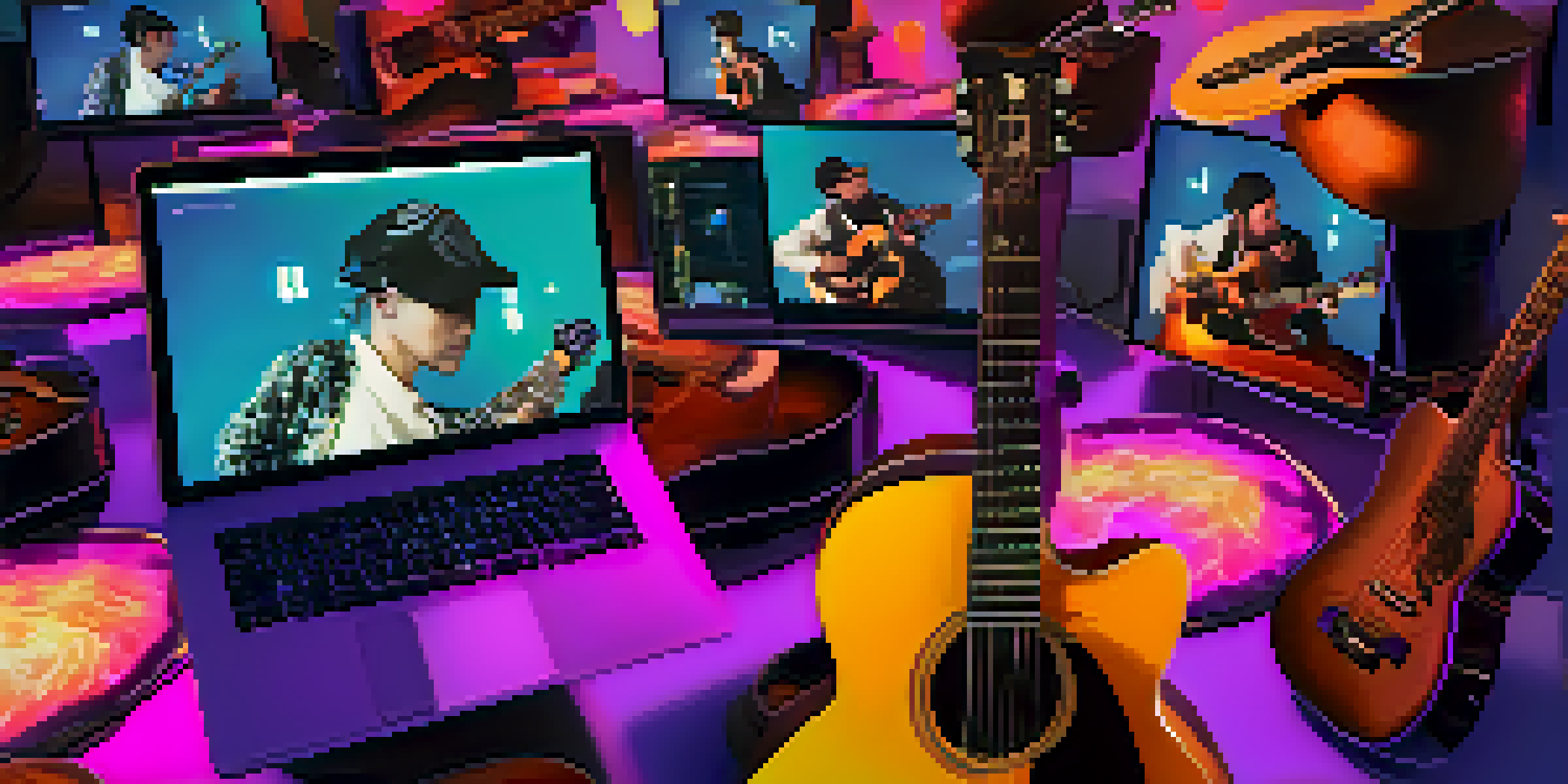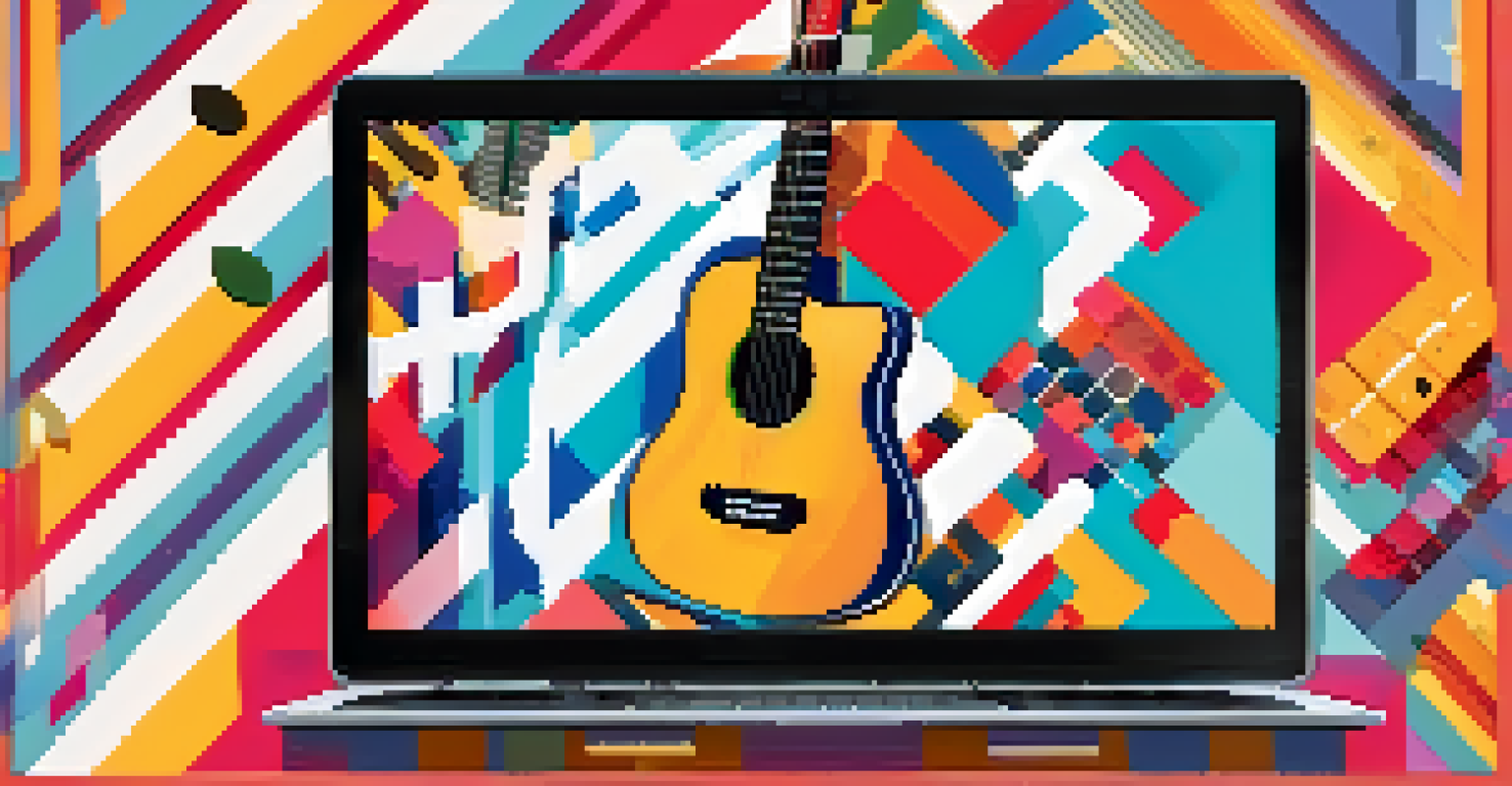Hosting Virtual Guitar Events: Tips for Community Engagement

Choosing the Right Platform for Your Event
When planning a virtual guitar event, selecting the right platform is crucial. Options like Zoom, Facebook Live, or specialized music platforms offer different features that cater to various needs. For instance, Zoom allows for interactive sessions where participants can ask questions, while Facebook Live can reach a broader audience.
The art of communication is the language of leadership.
Consider your audience's familiarity with these platforms. If your community is already using a particular service, it might be best to stick with that to minimize technical issues. Additionally, think about the type of interaction you want; will it be more of a concert or a workshop? This decision will guide your platform choice.
Lastly, do a test run on your chosen platform to ensure everything works smoothly. Familiarizing yourself with its features can help prevent hiccups during the main event and keep your audience engaged.
Promoting Your Virtual Guitar Event Effectively
Promotion is key to attracting participants to your virtual guitar event. Utilize social media platforms like Instagram, Facebook, and Twitter to create buzz around your event. Engaging visuals, like short video clips of past events or sneak peeks of what’s to come, can grab attention.

Consider creating an event page where people can RSVP and share the event with friends. This not only increases visibility but also fosters a sense of community. Encourage participants to invite fellow guitar enthusiasts, amplifying your outreach.
Choose the Right Platform
Selecting the appropriate platform for your virtual guitar event enhances engagement and minimizes technical issues.
Don't forget to use relevant hashtags to reach a wider audience interested in guitar events. Hashtags like #GuitarCommunity or #VirtualGuitarEvent can help you connect with potential attendees who are passionate about music.
Creating Engaging Content for Your Event
The content of your virtual guitar event is what will keep participants coming back for more. Think about incorporating a mix of performances, tutorials, and Q&A sessions. This variety can cater to different interests within your community and keep the energy high.
Feedback is the breakfast of champions.
Highlight guest performers or educators who can bring fresh perspectives and skills to your event. For example, featuring local artists or well-known guitarists can attract their fan base and widen your audience. Collaborating with others also adds credibility to your event.
Lastly, consider interactive elements like polls or live chats to keep attendees engaged. These features encourage participation and make the experience feel more personal, helping to foster a stronger community connection.
Setting Up a Virtual Jam Session
A virtual jam session can be a fantastic way to engage your community and create a lively atmosphere. To set this up, ensure that participants are familiar with the technology involved, including how to mute and unmute themselves. This helps reduce background noise and keeps the focus on the music.
Consider establishing a theme or a set list to guide the session. Themes like 'Classic Rock Night' or 'Acoustic Originals' can spark creativity and make the event more cohesive. Encourage participants to share their own songs or covers, allowing for a diverse range of musical expression.
Promote with Engaging Content
Utilizing social media and interactive visuals effectively promotes your event and fosters community involvement.
Lastly, record the session and share it afterward. This not only allows those who missed it to catch up but also provides valuable content for your community to enjoy and share.
Encouraging Interaction During the Event
Interaction is the heartbeat of any successful virtual event. Encourage participants to ask questions, share their experiences, or comment in real time. This can be facilitated through chat features or by utilizing live polling tools to gauge interest or gather opinions.
Consider appointing a moderator to help manage the flow of interaction. This person can highlight questions from the chat, ensuring that everyone feels heard and engaged. A lively back-and-forth keeps the energy up and makes the event more enjoyable for all.
Incorporating audience participation, such as sing-alongs or group challenges, can also enhance engagement. These moments create a sense of camaraderie and make the event feel more like a shared experience.
Building a Community Post-Event
The conclusion of your virtual guitar event doesn’t have to be the end of community engagement. Consider creating a dedicated online space, like a Facebook group or Discord server, where participants can continue discussions and share their musical journeys. This fosters lasting connections and encourages ongoing interaction.
Share highlights, recordings, or key takeaways from the event in this space. This not only keeps the momentum going but also serves as a reminder of the fun and learning experienced during the event. Participants are likely to share their own experiences and content, further enriching the community.
Encourage Post-Event Interaction
Building a dedicated online space for participants keeps the community engaged and encourages ongoing discussions after the event.
Additionally, encourage feedback on your event to understand what worked and what could be improved. This input is invaluable for planning future events and shows your community that you value their opinions.
Leveraging Feedback for Future Events
Feedback is a powerful tool for growth, especially when hosting virtual guitar events. After your event, send out a survey or create a feedback form to gather insights from participants. Ask specific questions about what they enjoyed and what could be improved to ensure you get actionable responses.
Take time to analyze this feedback and identify common themes. If many participants expressed a desire for more interactive elements or specific genres of music, consider incorporating those into your next event. This shows your community that you are listening and willing to adapt.

Finally, share how you plan to implement their suggestions in future events. This not only builds trust but also encourages ongoing participation, as attendees see their input making a real difference.